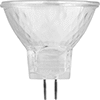Filter by
Voltage
Bulb Base Type
Light Technology
Bulb Shape Number
Overall Length
Bulb Diameter
Current
Bulb Base Number
Beam Spread
Screw-In Base Size
Rated Life
Export Control Classification Number (ECCN)
DFARS Specialty Metals
Equivalent Incandescent Bulb Wattage
About Brightness
More
About Light Appearance
More
































